Where nature reigns supreme and antelope hunting is marvelous
A historic antelope hunting reserve in the heart of Namibia, just 1 hour and 30 minutes by car from the capital Windhoek. 8,000 hectares of private reserve entirely dedicated to hunting (both rifle and bow). The landscape is typical savanna, crossed by three main rivers, bush, and surrounded by mountains, where most of the huntable antelopes in Southern and Western Africa can be found.
Namibia offers a unique hunting experience, with a wide range of antelopes and breathtaking natural beauty. The huntable antelope species include various varieties, each with its own specific characteristics and habitats. Some of the most hunted antelopes in Namibia are:
Oryx (Gemsbok): Iconic for its long horns and its resistance to extreme environmental conditions. The oryx is known for its strength and agility.
Springbok: Recognizable by its brown and white coat and famous for its exceptionally high jumps. It is one of the smallest and most common antelopes in Namibia.
Kudu: With its impressive spiral horns, the kudu is one of the most admired large antelopes. Hunting the kudu often requires skill and patience due to the elusiveness of the animal.

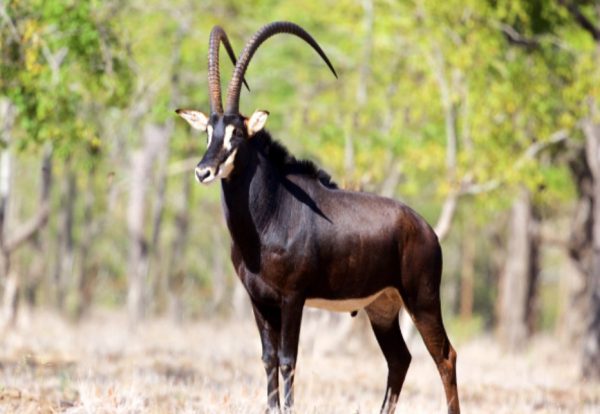
Blue Wildebeest: The Blue Wildebeest is one of the most recognizable species in Africa, with a massive body and a broad head. It is known for its blue-gray coat and black mane. The horns curve upwards and then bend downwards, forming an “S” shape. These antelopes migrate in large herds during the dry season in the African savannas.
Black Wildebeest: The Black Wildebeest is smaller than the Blue Wildebeest and is characterized by a dark coat and a mane on its back. Its horns are different from those of the Blue Wildebeest and are certainly more beautiful. This species is generally more solitary compared to the Blue Wildebeest and prefers open terrain.
Hartebeest: The Hartebeest is known for its slender body with a distinctive profile, featuring an arched back and a long neck. A large and resilient runner, this antelope has massive and rather short horns that curve upwards, forming a heart shape in the center, which gives it its name. The coat can vary from brown to reddish. The Hartebeest prefers open plains and grassy prairies.
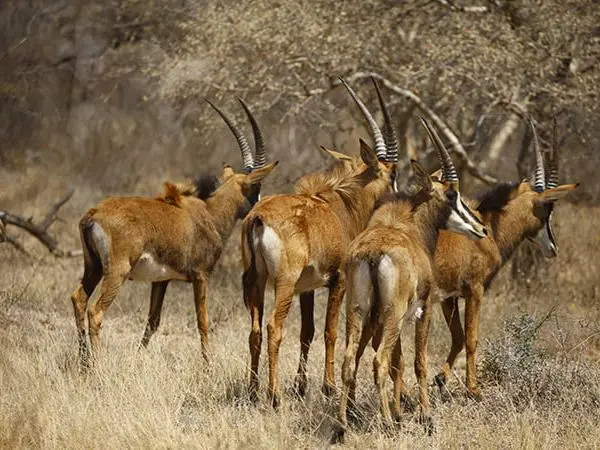
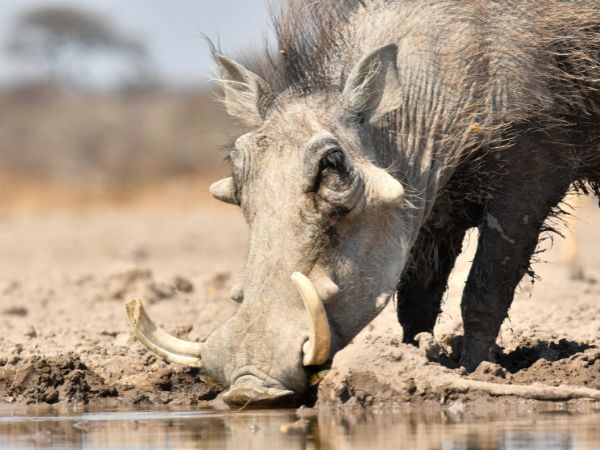
Besides antelopes…
Warthog: The warthog is a wild pig with a stocky body and distinctive upward-curving tusks. It is known for its digging ability and spends time in open areas and woodland habitats. It is also noted for its peculiar appearance, with a mane of hair along its back.
Ostrich: Ostriches are large, running birds characterized by a hefty body, long sturdy legs, and an elongated neck. They are known to be the largest birds on Earth. Male ostriches are typically larger than females and can reach a height of over 2 meters. They have large eyes and a small flat head with a wide, flat beak. Their prized skin can be used to make all kinds of accessories.
Giraffe: Although giraffe hunting is extremely limited and subject to strict regulations, in Namibia, in some areas, it is possible to find this species among the huntable game.
Zebras:
- Plains Zebra (Equus quagga): This species is the most common in Namibia and is found in the more open regions of the country. Characterized by very sharp black and white stripes, the plains zebra has stripes that extend down to the legs but do not meet on the belly. The back is rather low and rounded, and it has a black mane stripe on its back.
- Mountain Zebra (Equus zebra): This zebra species is rarer and found in the mountainous or hilly regions of Namibia. It has black and white stripes similar to the plains zebra, but the stripes meet on the belly forming a more pronounced “chiseled” pattern. The mountain zebra has a more robust body structure compared to the plains zebra.

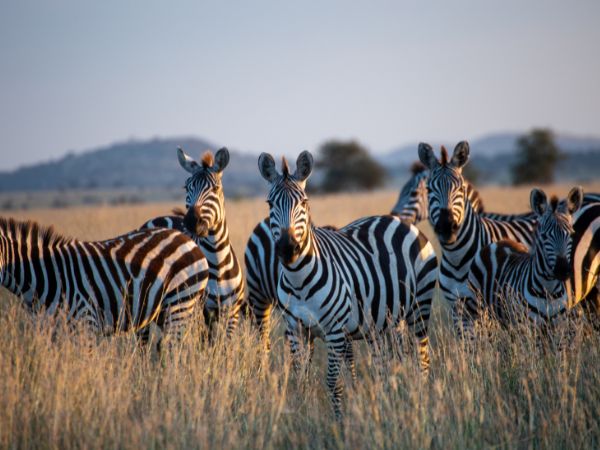
Additionally, zebras tend to stay close to one another during dangerous situations, further increasing the confusion for predators. The combination of stripes and social behavior helps protect zebras from predator attacks, giving them a greater chance of survival within the herd.
How to Hunt Antelopes in Namibia
Hunting in Namibia takes place in various ways, including hunting on foot, hunting from a blind, and hunting from a vehicle. Hunters can choose from various options depending on personal preferences and habitat conditions.
As for the natural beauties near Windhoek, the capital of Namibia, there are many breathtaking attractions to explore.
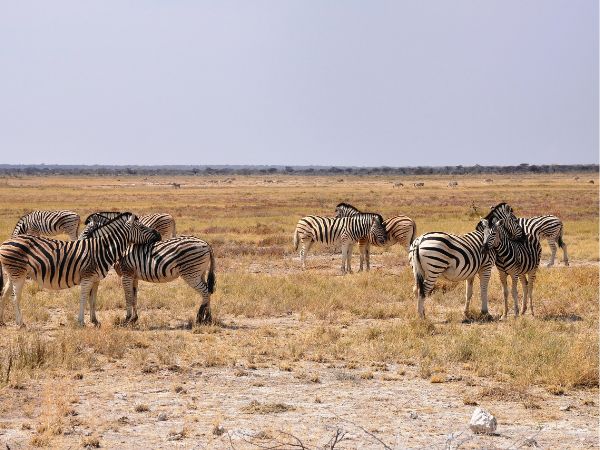
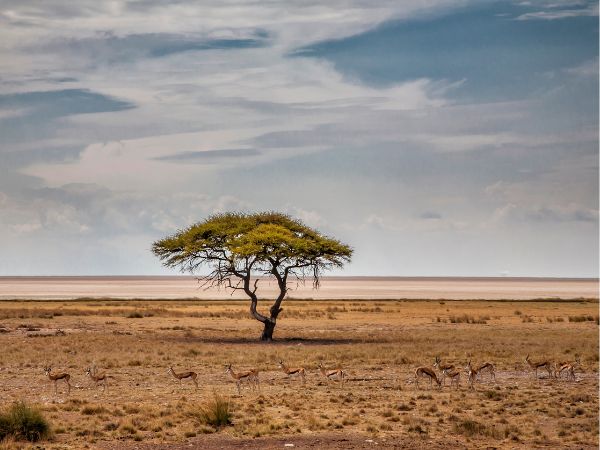
Wide variety of game in prestigious lodges and no need for vaccinations. Excellent destination for a first approach to Africa and great for those who want to bring the whole family.
The climate influences the choice of antelope hunters
Namibia has a varied climate with significant differences in seasons, and these differences can affect the hunting experience. The main climatic seasons in Namibia are:
Rainy season (November – April): During this season, which corresponds to summer, Namibia receives its most significant rainfall. Temperatures can be warm and the areas become greener, attracting wildlife. However, conditions can become muddy, making driving and wildlife spotting more difficult.
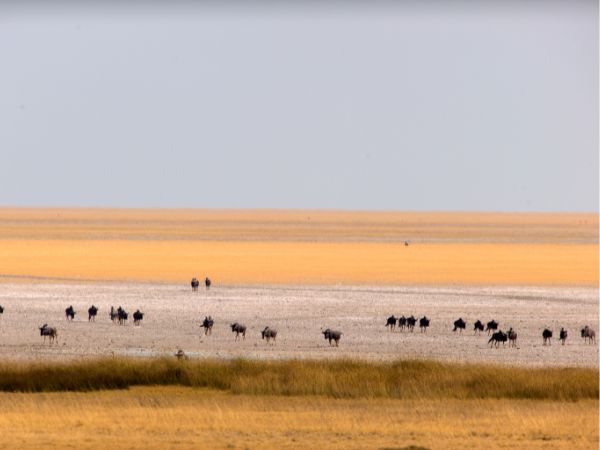

Dry season (May – October): This is the dry season, and the temperature can vary widely, from hot days to cold nights. This season is considered optimal for hunting because the reduced vegetation makes it easier to spot and track wildlife. Water bodies tend to shrink, forcing animals to gather around permanent sources.
For hunters, the choice of season can affect wildlife sighting conditions. During the rainy season, areas can be more difficult to traverse due to muddy terrain, and the presence of vegetation can make it harder to spot animals.
During the dry season, reduced vegetation can make it easier to spot animals, but temperatures can be colder, especially during daylight hours.
Furthermore, the choice of season can also affect access to different hunting areas, as some grounds may become inaccessible during the rainy season. Hunters often plan their hunting trips based on these seasons, considering both the weather conditions and wildlife sighting opportunities.
The choice is subjective, and either way, the allure of Africa will accompany you in both seasons.
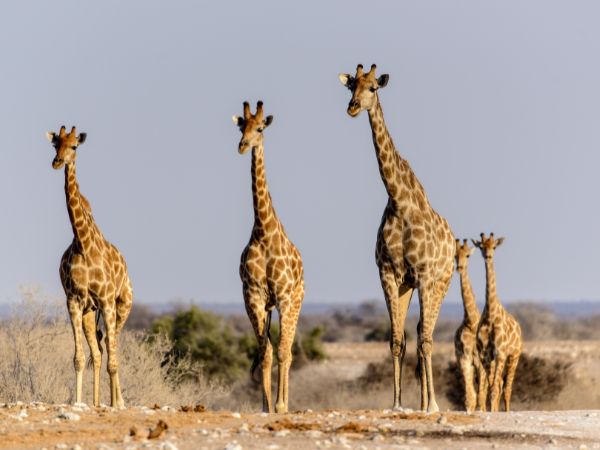
Gallery
What People Are Saying

My hunting adventure in Tanzania was unforgettable.
The trip was organized flawlessly, from the arrival to the warm welcome to the experienced and passionate guides who made every day of the safari unforgettable. The attention to detail and professionalism of Montefeltro made this safari an unforgettable hunting experience.
John Ross

Another fantastic hunting experience organized by Montefeltro’s friends has just ended.
This time in Tanzania was more than amazing.
Thanks Montefeltro!
George F.

My hunting trip to Tanzania was an extraordinary experience.
The Montefeltro team demonstrated a perfect knowledge of the territory.
I enjoyed the natural beauty of Africa.
I highly recommend Montefeltro for an unforgettable hunting experience.








